GET STARTED in
LEATHER CRAFTINGStep-by-Step Techniques & Tips for Crafting SuccessTONY LAIER, KAY LAIER

WELCOME TO LEATHER CRAFTING!

Historic, everlasting, classic, trending, creative, fun, a craft for all ages these all describe leather crafting. It has been called the universal craft because it is shared with each generation around the world through hands-on teaching, demonstrations, experience, and exploration. We hope you will have fun and benefit from the basic techniques and tips shown in this book.

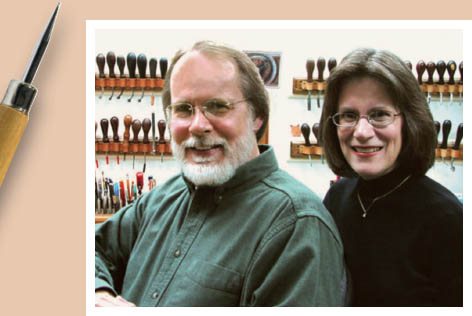 Tony Laier
Tony Laier has over 40 years of experience in the leather industry: as Director of Research and Development for Silver Creek Leather Company and Tandy Leather Company, as leather artist, designer, writer, teacher, market manager and in direct sales. He is a musician, Native American hobbyist, and a Vietnam veteran. Tony received the 1999 Al Stohlman Award for Achievement in Leather Craft and now serves on the Board of Trustees for the Al and Ann Stohlman Award Foundation.
He also is the master tooler for Steel Strike Leather Products, Inc., a high-end leather furniture company in Buena Vista, CO, where he currently lives and works with his wife, Kay. She, too, has over 40 years in the leather art and advertising profession at Silver Creek Leather Company, Tandy Leather Company, and Tandycrafts National Advertising. Together, they have co-authored this book to share their years of accumulated knowledge with leather crafters of all ages and levels of experience. ISBN 978-1-4972-0346-4 COPY PERMISSION: The written instructions, photographs, designs, patterns, and projects in this publication are intended for the personal use of the reader and may be reproduced for that purpose only. Any other use, especially commercial use, is forbidden under law without the written permission of the copyright holder. Every effort has been made to ensure that all information in this book is accurate.
However, due to differing conditions, tools, and individual skills, neither the author nor publisher can be responsible for any injuries, losses, or other damages which may result from the use of the information in this book. INFORMATION: All rights reserved. All images in this book have been reproduced with the knowledge and prior consent of the artists concerned and no responsibility is accepted by producer, publisher, or printer for any infringement of copyright or otherwise, arising from the contents of this publication. Every effort has been made to ensure that credits accurately comply with information supplied. WARNING: Due to the components used in this craft, children under 8 years of age should not have access to materials or supplies without adult supervision. Under rare circumstances components of products could cause serious or fatal injury.
Please read all safety warnings for the products being used. Neither New Design Originals, the product manufacturer, or the supplier is responsible. NOTE: The use of products and trademark names is for informational purposes only, with no intention of infringement upon those trademarks. 2017 by Tony and Kay Laier and New Design Originals Corporation, www.d-originals.com, an imprint of Fox Chapel Publishing, 800-457-9112, 903 Square Street, Mount Joy, PA 17552. We are always looking for talented authors. To submit an idea, please send a brief inquiry to .
Printed in China Fifth printing
CONTENTS
ABOUT LEATHER: THE BASICS
For centuries, animal skins have been tanned to prepare them for use as garments, accessories, saddles, tack, utility items, and bindings. The animals that leather comes from can be grouped in two categories.
Domestic Animals: These are cows, pigs, and sheep, mostly by-products of the food industry.
Wild or Game Animals: Some are raised commercially, but most are taken in the wild. They include deer, elk, moose, bison, kangaroo, and some exotic animals like frogs, lizards, birds, and snakes.


Cow veg-tan side
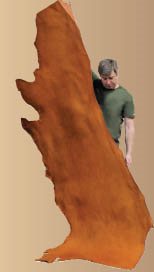
Cowhide side
LEATHER TANNING PROCESSES
There are many different tanning processes.
Most common today are the vegetable-tanning and chrome-tanning processes.
1. Vegetable-Tanned (Veg-Tan) Leather
Hides are either suspended in pits or immersed in a large rotating drum in a tanning solution made by extracting the natural tannins or various trees and their bark. This produces leather suitable for hand tooling or stamping, machine embossing, molding, dyeing, and finishing.
2. Chrome-Tanned Leathers
This tannage uses chromium salts and takes much less time to process than veg-tan leather.
It produces soft finished and suede leathers used for garments, footwear, upholstery, and more.
LATIGO LEATHER
Latigo is cowhide that is combination tannedboth chrome- and veg-tanned. Normally mid to heavy weights, this leather is strong and durable, suitable for belts, straps, lace, footwear, horse tack, and outdoor gear.
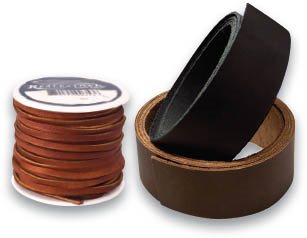
Latigo leather
SUEDES
Ideal for craft and fashion accessories, lace, belts, and garments. Most, but not all, garment suede is chrome tanned. Suedes have been chrome tanned, sanded, and brushed on one or both sides for a soft, textured surface.
One side usually has a finer texture. Suedes are pre-dyed, ready to cut, punch, and assemble into any size project. They are available in precut small pieces or full skins and sides. Sueded animal skins are made from cowhide splits, goat, pigskin, and deerskin.  Suede is also used for lace and is available in precut strips and rectangular pieces. weight = thickness). weight = thickness).
Suede is also used for lace and is available in precut strips and rectangular pieces. weight = thickness). weight = thickness).
Heres a guide to help you select leather for your projects. 

Next page

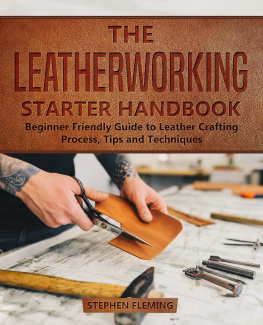
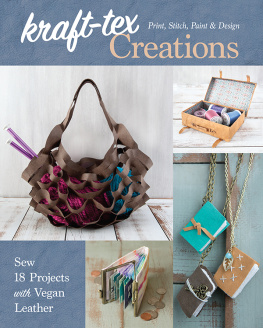
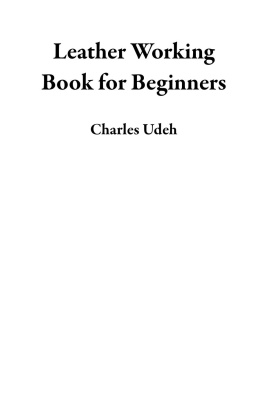
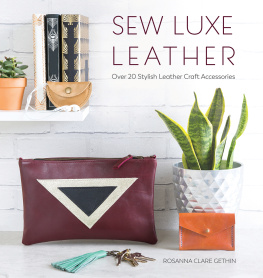
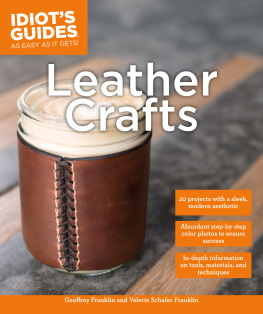
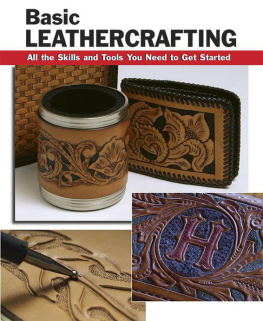
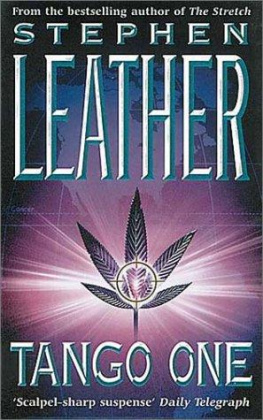


 Historic, everlasting, classic, trending, creative, fun, a craft for all ages these all describe leather crafting. It has been called the universal craft because it is shared with each generation around the world through hands-on teaching, demonstrations, experience, and exploration. We hope you will have fun and benefit from the basic techniques and tips shown in this book.
Historic, everlasting, classic, trending, creative, fun, a craft for all ages these all describe leather crafting. It has been called the universal craft because it is shared with each generation around the world through hands-on teaching, demonstrations, experience, and exploration. We hope you will have fun and benefit from the basic techniques and tips shown in this book. 
 Tony Laier has over 40 years of experience in the leather industry: as Director of Research and Development for Silver Creek Leather Company and Tandy Leather Company, as leather artist, designer, writer, teacher, market manager and in direct sales. He is a musician, Native American hobbyist, and a Vietnam veteran. Tony received the 1999 Al Stohlman Award for Achievement in Leather Craft and now serves on the Board of Trustees for the Al and Ann Stohlman Award Foundation.
Tony Laier has over 40 years of experience in the leather industry: as Director of Research and Development for Silver Creek Leather Company and Tandy Leather Company, as leather artist, designer, writer, teacher, market manager and in direct sales. He is a musician, Native American hobbyist, and a Vietnam veteran. Tony received the 1999 Al Stohlman Award for Achievement in Leather Craft and now serves on the Board of Trustees for the Al and Ann Stohlman Award Foundation. 
 Cow veg-tan side
Cow veg-tan side  Cowhide side
Cowhide side  Latigo leather
Latigo leather  Suede is also used for lace and is available in precut strips and rectangular pieces. weight = thickness). weight = thickness).
Suede is also used for lace and is available in precut strips and rectangular pieces. weight = thickness). weight = thickness).
